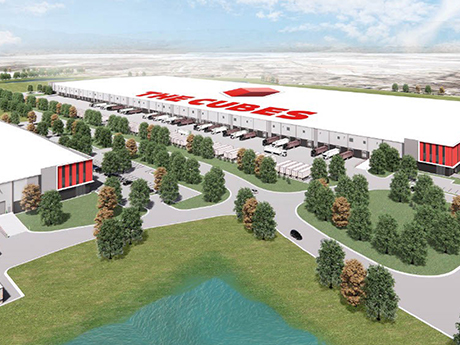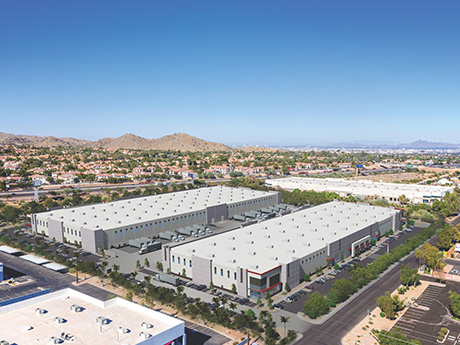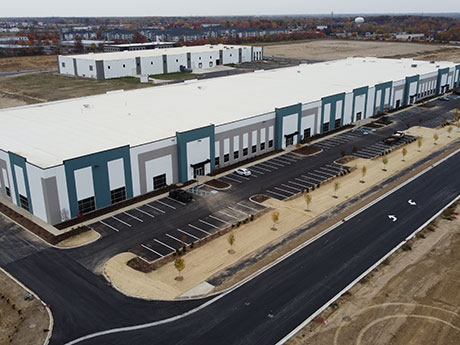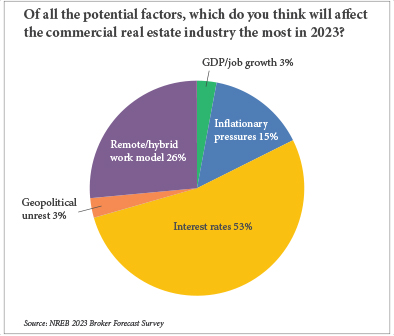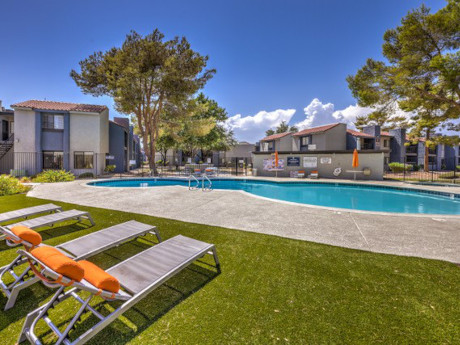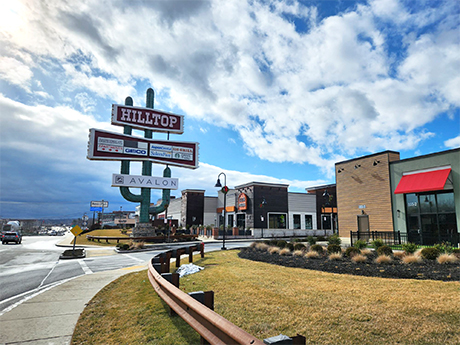Nashville’s industrial market continues to see strong demand going into 2023. In fact, more than 1.7 million square feet of leasing activity was recorded throughout fourth-quarter 2022, bringing the year-to-date transaction volume just shy of an impressive 8.8 million square feet. Even overall vacancy sat at 3 percent during the final quarter of 2022, and while that was a slight increase compared to the previous quarter, it still was 30 basis points below the national vacancy average. Despite a recessionary environment and uncertainty of what’s next in the commercial real estate sector, Nashville’s industrial market is uniquely positioned for the upcoming year. As Nashville’s industrial market still experiences growth, there are several macro-economic trends impacting it that are worth keeping an eye on, such as e-commerce and third-party logistics demand. Interest rates have also risen, making it very tricky to value property and cap rates due to the debt markets. This has triggered limited investment activity from buyers and sellers alike across all property types, including industrial. Industrial developers are also being more cautious as rising interest rates have increased construction costs. Many developers and investors have purchased land or have land under contract, for example, but are waiting for …
Market Reports
— By Rob Martensen, Senior Executive Vice President, Colliers International — There are a lot of questions being asked about the Phoenix industrial market as we turn the calendar to 2023. Having been an industrial broker in this market for 25 years, I have seen many ups and downs, which are historically driven by the residential construction market. Phoenix used to be a one-industry town…and that industry was growth. Sure, we’ve had large companies like Motorola, Avnet and Intel, but the industrial market has been mostly driven by people moving to Arizona and buying houses and household goods. Phoenix has transformed in the past five years into a thriving city that now supports many industries. The largest is advanced manufacturing. This includes semiconductors, battery manufacturing, electric vehicle manufacturing and all supporting businesses. Intel is in the process of a $20 billion expansion to their existing facility, while Taiwan Semiconductor Manufacturing Company (TSMC) is under construction on a $12 billion chip making factory. TSMC recently announced it’s going to immediately start on Phase II of this factory, which will be another $28 billion spent in Phoenix. It is estimated that 160 new companies have moved to Phoenix to support these two new …
By Ken Martin, JLL The Indianapolis industrial real estate market ended 2022 nearing a record high for a single year with more than 19.6 million square feet of absorption. Much of this was recorded in Hendricks, Johnson and Hancock counties with total year-end net absorption of 7.3, 6.4 and 3.2 million square feet, respectively. These submarkets continue to offer tenants excellent access to both interstate highways to transport goods across the country, as well as strong employment bases. Developers and tenants often cite employment bases as their No. 1 criteria in selecting an optimum site. With vacancy at an all-time low of sub 5 percent for the majority of 2022, developers and owners were able to push rents as demand outstripped supply. As recently as two to three years ago, rents were consistently in the high $3’s per square foot range and now we consistently see rents in the $5 per square foot range or higher. Year-end asking rents averaged $5.54 per square foot overall and $6.48 per square foot for mid-sized warehouse space. In some markets, however, rents for warehouse space were well above the average. In the central business district, for example, asking rates for warehouse …
By Hayden Spiess First comes inflation, then come interest rate hikes. The fact that this sequence is a predictable one does not temper the discomfort of reckoning with it, and the commercial real estate industry is as familiar with this pain as any. This familiarity was made clear in the results of an exclusive survey by Northeast Real Estate Business, which was conducted via email toward the end of 2022. Two groups, one comprising brokers and the other consisting of developers, owners and managers, were asked to assess the state of commercial real estate in the region with both retro- and forward-looking perspectives. Of the brokers questioned, approximately 53 percent believed that interest rates would be the factor to affect their industry the most in 2023 (see chart). These individuals selected this option from a list that included other factors such as remote/hybrid work models, inflationary pressures and GDP/job growth, which received 26.5, 14.7 and 2.9 percent of the vote, respectively. The other two options — supply chain constraints and election results — received no votes. Developers likewise identified interest rates as the demographic, political or economic factor likely to cause the most disruption within the industry. An …
Tennessee’s Appeal Process Allows Nashville Taxpayers to Challenge Assessments for New Construction
by John Nelson
Over the past decade, Nashville has enjoyed a baffling explosion of growth that sent cranes shooting up all over the city, festooned with developer names like Bell, Clark and Giarratana. Highrise towers of glass and steel rose out of the old rail yards like the emerging monolith in the opening scene of “2001: A Space Odyssey” multiplied in a funhouse mirror. The Metropolitan Government is eager to add new projects to its tax rolls, and its Assessor of Property decides when and how that happens. The assumptions made by the assessor’s office about a project’s cost and timing dictate how quickly and how much a new building is taxed. So, as always, taxpayers need to keep an eye on what the assessor is doing. The assessor’s difficult job has become even more complicated in the post-COVID quagmire of supply chain failures. Twelve-month projects have stretched into 24-month projects, and the assessor’s assumptions about completion times have been thrown out of whack. To make matters worse, Tennessee’s property tax statutes were not designed to give relief for construction delays or lengthy projects, and now the clock is ticking. Assessing new construction The last Davidson County reappraisal was in 2021, and the …
— By Jerry Holdner, Southern California Region Lead, Innovation & Insight, AVANT, Avison Young — The industrial market in the Inland Empire has been performing beyond what most of the industry projected over recent quarters. The region boasts a low unemployment rate of 4.2 percent, as of November 2022, which is below the anticipated 5.4 percent estimated a year ago. It is important to highlight, however, that job creation has been uneven. Leisure and hospitality jobs are still underwater, for example. The bright spot is that high-value-added jobs in a broad range of sectors like technology, software development, aerospace, scientific research, medical products and pharmaceutical development continue to grow, which bode well for the industrial sector. Here are some key market indicators, according to Avison Young’s fourth-quarter Inland Empire Industrial Insights report: • There was 38.9 million square feet of new industrial construction underway at the end of 2022. This is down 37.1 percent as compared to the end of 2021 when 28.4 million square feet was under construction. • There was 13.9 million square feet of positive absorption in 2022, down 53.5 percent when compared to 2021’s record-high total of 29.9 million square feet of positive absorption. This represents 2.5 percent …
— By Andrew Cheney, Principal, Lee & Associates — The metro Phoenix office market continues a slow recovery as it battles the nation’s highest rates of both sublease growth and inflation. Starting off the fourth quarter at only 532,000 square feet (year-to-date), net absorption in Greater Phoenix remained well off the 20-year average mark of 1.6 million square feet. Direct office vacancy stands at a seemingly high figure of 17.6 percent. However, this is in line with the 20-year average of 18 percent. Currently, there are six key trends impacting Phoenix’s office market. Small tenants are back in the office. I imagine most brokers will report that the highest concentration of active, touring prospects are in the market for less than 10,000 square feet. These company sizes want to be in the office in metro Phoenix, and not just a few days a week. High-quality spec suites rule. Landlords recognize that smaller tenants are driving leasing activity — and that these small tenants will not wait for a build-out. Instead of holding one or two spec suites in inventory at any one time, landlords are building out large batches of five to seven spec suites at a time. And they’re spending money to build …
By Steve LaMotte Jr., CBRE With 2021, a record year for asset appreciation and fundamentals, 2022 marked a turning point in the apartment space across the nation. Multifamily leasing velocity, rent growth and occupancy levels have seemingly reached their current peak levels and begun to cool. Instability in the capital markets throughout much of 2022 encouraged many on both the buy and sell sides to wait it out, looking for signs of stability. However, despite the turbulence and the pause, the multifamily sector has remained resilient and is expected to maintain its claim as the preferred asset classification in 2023. Further, metro Indianapolis has been a standout performer in every meaningful measurement. Now widely regarded as an emerging star of the Midwest, metro Indianapolis has earned its place as the nation’s rent growth leader in the back-to-back months of October and November of 2022, according to Yardi Matrix. The metro has outperformed many major markets while maintaining its characteristic affordability. According to research from CBRE Econometric Advisors, the average metro rent of $1,200 per unit ($1.30 per square foot) shows that metro Indianapolis will deliver outsized rent growth in times of distress while remaining one of the most affordable metro’s …
By Jared Glover, Director of Investment Sales, Berkadia The Las Vegas multifamily market started to feel the effects of higher interest rates alongside persistent inflation as the third quarter ended. Thankfully, properties still experienced trade-outs and overall in-place rent growth, though year-over-year growth began to moderate, coming in near 8 percent. Loss to lease capture remains, although at a slower pace than prior quarters, with average market rent at $1,515. The third quarter also saw a 3 percent decrease in occupancy, setting at 93.6 percent, after experiencing record occupancy throughout 2021. On the transaction front, we have seen a dramatic shift in cap rates. This is a direct result of the Fed’s tightening. Within a six-month span, cap rates widened upwards of 150 basis points — from low to mid-3s to 5 and trending up, depending on product type. The homogenous nature of national cap rates in 2021, with most markets trading in the 3.5 range, seems to have shifted back to historical norms as the primary/coastal markets once again demanded a premium versus secondary or tertiary markes. Both Monterra and the Boulevard traded north of a 5 cap on in-place numbers, speaking to these latest cap rate trends. Just four months ago, a …
By Ben Starr, partner at Atlantic Retail As the retail real estate industry seeks to understand what may lie ahead in 2023, a study of the wild ride it took in 2022 will likely produce the best clues. As early as March of last year, it was clear that 2022 would be a year of activity like none of the prior 15. While headlines through the spring and summer emphasized a run-up in consumer prices and a recession hovering on the back of interest rate hikes, users of retail space intensified their pursuits of new opportunities, unbowed by the looming economic clouds. Everyone — traditional commodity retailers, direct-to-consumer concepts, restaurants, fitness users, medical and other services — was chasing deals. Whether small or large or in primary, secondary or tertiary markets, activity heated up with each new month. Reflecting Larger Trends With its dense middle-class demographics, close proximity to Boston and high traffic counts, Saugus has historically been in high demand among category killers as well as high-profile service and restaurant operators. Though its local mall, Square One, has struggled as larger, more regional malls rose in upscale neighboring markets, the heavily traveled Route 1 corridor has remained one of …


